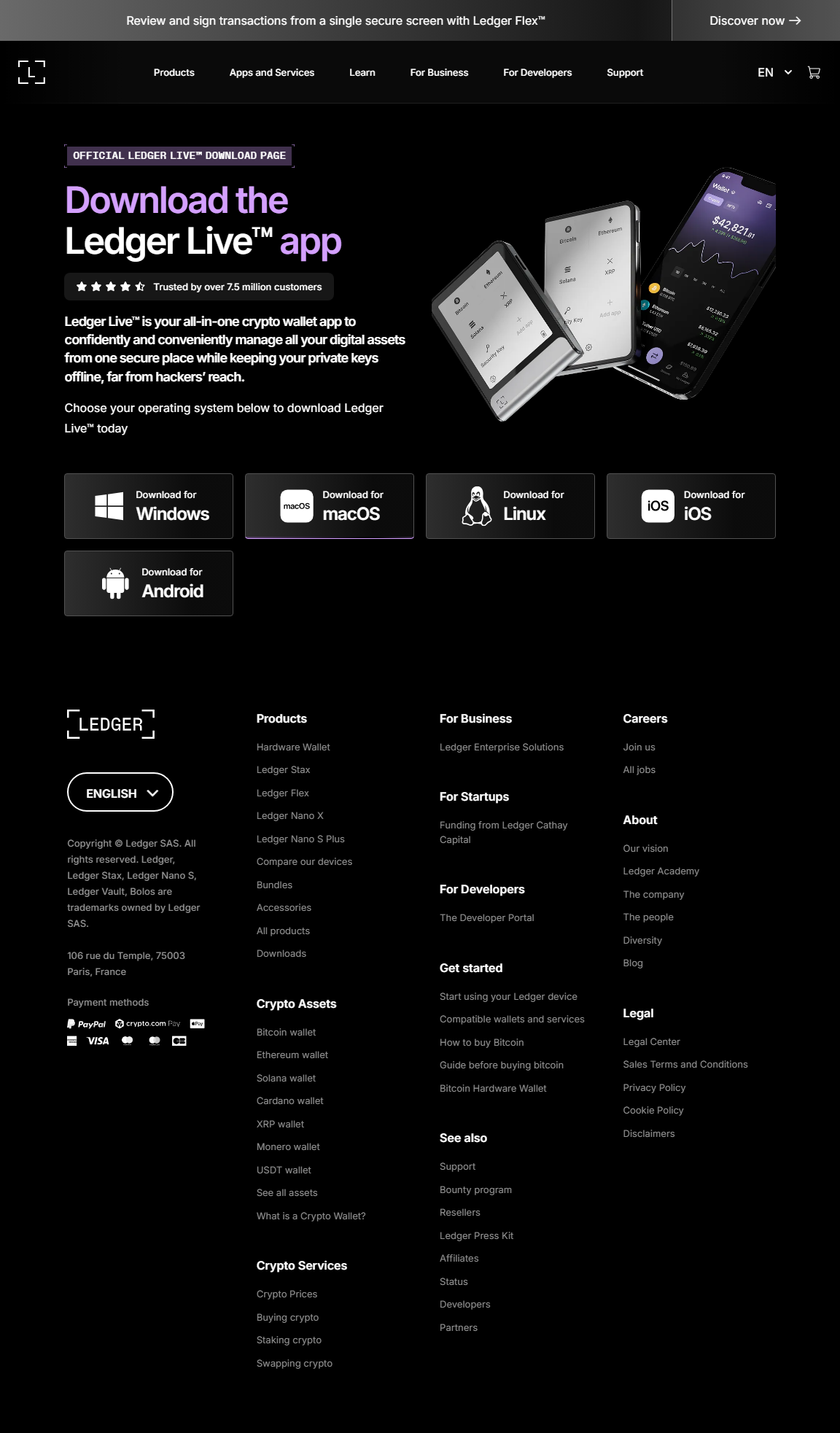
Getting Started with Ledger: A Complete Guide
Ledger is one of the world’s most trusted names in cryptocurrency security. Its hardware wallets—such as the Ledger Nano X, Nano S Plus, and Stax—offer a secure way to store and manage digital assets offline. The page ledger.com/start is designed to guide new users through the process of setting up their Ledger device safely and correctly. This guide explains what you’ll find on that page and how to complete each step with confidence.
1. What Is Ledger and Why It Matters
Ledger wallets are physical devices that keep your private keys offline, away from hackers and malware. Unlike software wallets that store keys on your computer or phone, Ledger devices act as secure vaults. Your coins themselves are not stored on the device—they remain on the blockchain—but your private keys, which control access to your assets, are stored safely inside the Ledger hardware.
Using a Ledger wallet reduces the risk of phishing, exchange hacks, or accidental loss due to compromised software wallets. It’s the perfect choice for anyone who values security and long-term crypto storage.
2. Unboxing Your Ledger Device
When you receive your Ledger device, check that the packaging is intact and has not been tampered with. Ledger never ships devices that are pre-configured or come with a recovery phrase already printed. If you see a recovery phrase included, it’s a scam—do not use that device.
Inside the box, you’ll typically find:
The Ledger hardware wallet (Nano X, Nano S Plus, or Stax)
A USB cable
Recovery sheets for writing down your 24-word recovery phrase
Instruction leaflet
Once confirmed that everything looks genuine, go to ledger.com/start to begin your setup.
3. Visiting ledger.com/start
The official start page is your gateway to Ledger Live, the companion software needed to operate your device. Avoid searching for “Ledger download” through a search engine, as fake phishing sites may appear. Always type the address manually or use the QR code printed inside your box.
At ledger.com/start, you’ll be prompted to:
Select your device model.
Download and install Ledger Live—the official desktop and mobile app.
Follow the step-by-step instructions to set up your wallet.
4. Installing Ledger Live
Ledger Live is available for Windows, macOS, Linux, iOS, and Android. It lets you manage accounts, send and receive crypto, view your portfolio, and install apps for different blockchains.
After installing the app:
Open Ledger Live.
Connect your Ledger device using the USB cable (or Bluetooth for Nano X).
Follow on-screen prompts to begin setup.
5. Setting Up Your New Device
You’ll be asked whether you want to set up a new device or restore from recovery phrase.
If this is your first Ledger:
Choose Set up as new device.
The device will prompt you to create a PIN code (4–8 digits). Use something private and secure.
Next, it will generate a 24-word recovery phrase.
Write the words down carefully on the provided recovery sheet.
Do not take a picture or store it online.
Your recovery phrase is the only way to restore your crypto if the device is lost or damaged.
After confirming your phrase on the device, your Ledger is ready.
6. Installing Apps and Adding Accounts
In Ledger Live, navigate to “My Ledger” to install apps for the cryptocurrencies you want to manage—Bitcoin, Ethereum, Solana, etc. Each blockchain requires its own app on the device. Once installed, you can add accounts for those coins within Ledger Live.
This process doesn’t store coins on your device; instead, it links your private key to your blockchain addresses securely. Your balances and transactions will appear in Ledger Live, but your keys remain offline at all times.
7. Sending and Receiving Crypto
To receive crypto:
Open the relevant app (e.g., Bitcoin) on your Ledger.
In Ledger Live, click Receive and select the account.
Verify that the address displayed on the computer matches the one shown on your Ledger device screen.
Only use the address shown on your device—this prevents phishing or malware interception.
To send crypto, click Send, enter the recipient address, and confirm the transaction on the Ledger device by pressing both buttons. Nothing is approved unless confirmed physically on your Ledger.
8. Security Best Practices
Always keep your recovery phrase offline and private.
Never share it with anyone, even if someone claims to be from “Ledger Support.”
Only download Ledger Live from the official site.
Check the URL every time you access ledger.com—look for the padlock symbol and “https.”
Consider using a passphrase for added security (an optional 25th word that encrypts your wallet further).
9. Restoring Your Wallet
If your device is lost, stolen, or damaged, you can restore your wallet using your 24-word recovery phrase on a new Ledger or compatible hardware wallet. Simply select “Restore from recovery phrase” during setup and enter your words in the correct order. Your crypto will reappear once the device syncs with the blockchain.
10. Final Thoughts
Ledger offers one of the most secure ways to manage and protect your cryptocurrency. By following the setup instructions on ledger.com/start, you can take control of your digital assets with confidence. Always remember: your recovery phrase equals your funds—protect it above all else.
Whether you’re an experienced investor or just beginning your crypto journey, starting with Ledger ensures that your security foundation is strong, reliable, and built for the long term.